Tottenham Hotspur have finished in the top three of the Premier League thrice in the last four seasons, even once as a runner-up. Last season, they finished fourth and reached the final of the Champions League despite a self-imposed transfer ban due to the building of their new stadium. However, this summer they spent more than €100 million in the transfer window; signing bright young names such as Tanguy Ndombele, Giovani Lo Celso (on loan), and Ryan Sessegnon.
Mauricio Pochettino proved himself as a tactical genius last season as he managed injury-laden Tottenham to their first-ever European final since 1984. Domestically, he helped Spurs to get 76 points on average in the last four league campaigns and took them to three domestic semi-finals in the same period. With a considerably promising transfer window and most of the squad getting to their prime age, it seems that this season Tottenham could put some serious challenge for trophies.
This tactical analysis scout report will break down how Pochettino’s Spurs could sail through the season, and probably bringing silverware to the white side of North London.
Shapes of Spurs
Pochettino’s Tottenham are known as a team able to play in multiple shapes and systems. Last season they used a broad range of formations from 4–2–3–1, 3–4–3, and 5–3–2. This campaign— as from what they showed in their pre-season matches — Spurs probably could play regularly in a back-four system; either with 4–2–3–1 or 4–4–2 diamond.
With lots of midfielders but few natural strikers, it seems that Tottenham could use 4–2–3–1 as their preferred shape. Serge Aurier could probably start as a regular right-back this season because newly-converted Juan Foyth hasn’t been able to show enough quality for Spurs in that role.
Harry Winks would be given a huge task to orchestrate the midfield with either Tanguy Ndombele or Moussa Sissoko supporting him. Real Betis loanee Lo Celso and Christian Eriksen could also play in the double-pivot system despite their offensive tendencies, especially when facing lesser sides.
In the flanks, last season’s great performance by Lucas Moura and Son Heung-min would almost guarantee them a starting place in this campaign. Talisman Kane will likely be supported by his fellow Englishman Dele Alli, as both of their spatial awareness and quality on the ball would support each other.
Based on that, their strongest side to play in the 4–2–3–1 is as follows:
Hugo Lloris; Serge Aurier, Toby Alderweireld, Jan Vertonghen, Danny Rose; Tanguy Ndombele, Harry Winks; Lucas Moura, Dele Alli, Son Heung-min; Harry Kane.
Not only that, Spurs can rotate their squad and tactics week-in-week-out due to their great depth. Names like Erik Lamela, Eric Dier, as well as newcomers Lo Celso and Sessegnon would be very useful from the bench.
Calm and composed from the back
Pochettino’s Tottenham like to play possession-based football and prefer to build their play from the back rather than relying on physical duels with more direct balls. In their build-ups, one of the pivots would drop in between the centre-halves while the other would stay higher to receive the pass from the back. The goalkeeper than would have at least three potential passing options, which allows Tottenham to initiate their build-ups more smoothly.
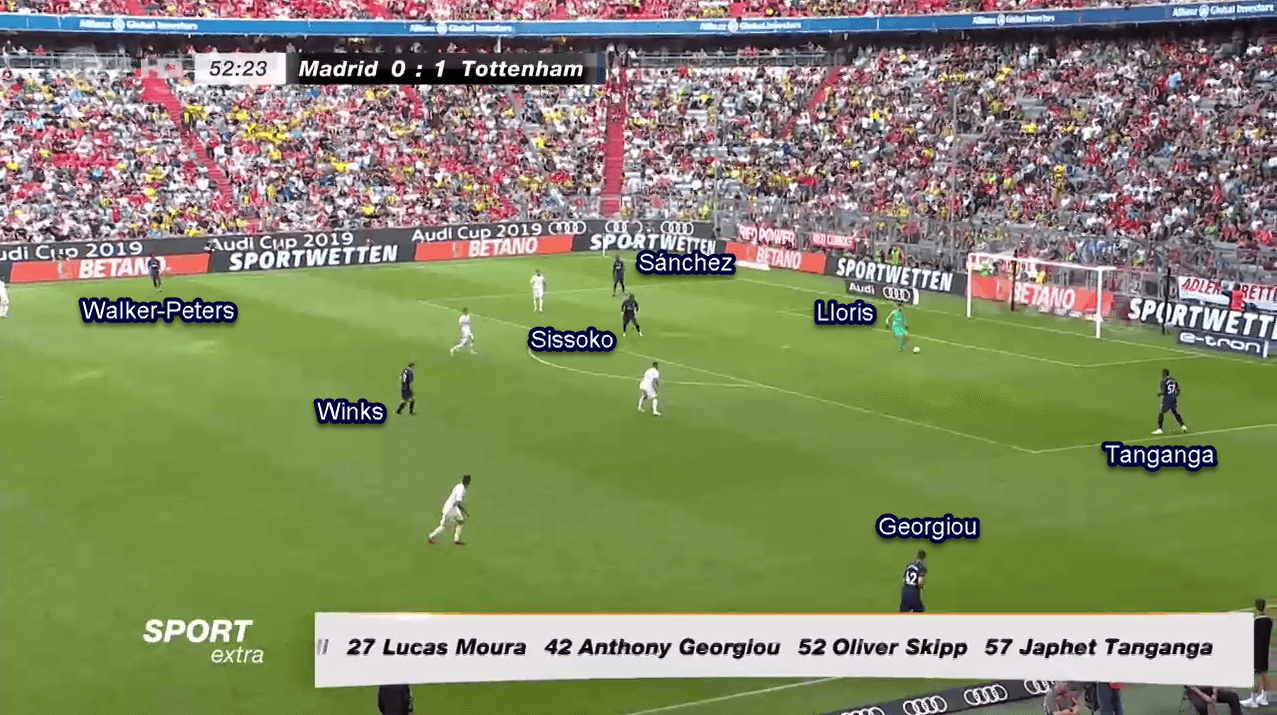
If all the near passing lanes are closed, the goalkeeper or the on-ball centre-back could play the ball to the flanks due to the wide and advanced positioning of the full-backs. The receiving full-back then can lay the ball off to the advanced holding midfielder or carrying the ball forward on his own if there’s a space to roam into.
The Argentinian manager is yet to unleash a new tactical invention regarding the new goal-kick rule, but with his team’s tendency to build their play from the back it will be very interesting to see how he adapts to that.
Versatile and bold offensively
Spurs are quite brave to put numerous players ahead of the ball, which makes them dangerous in the final third and very handy in unlocking opponents’ deep block. One of the most interesting thing about this possession-based Spurs side is their players’ versatility in multiple positions and areas across the pitch.
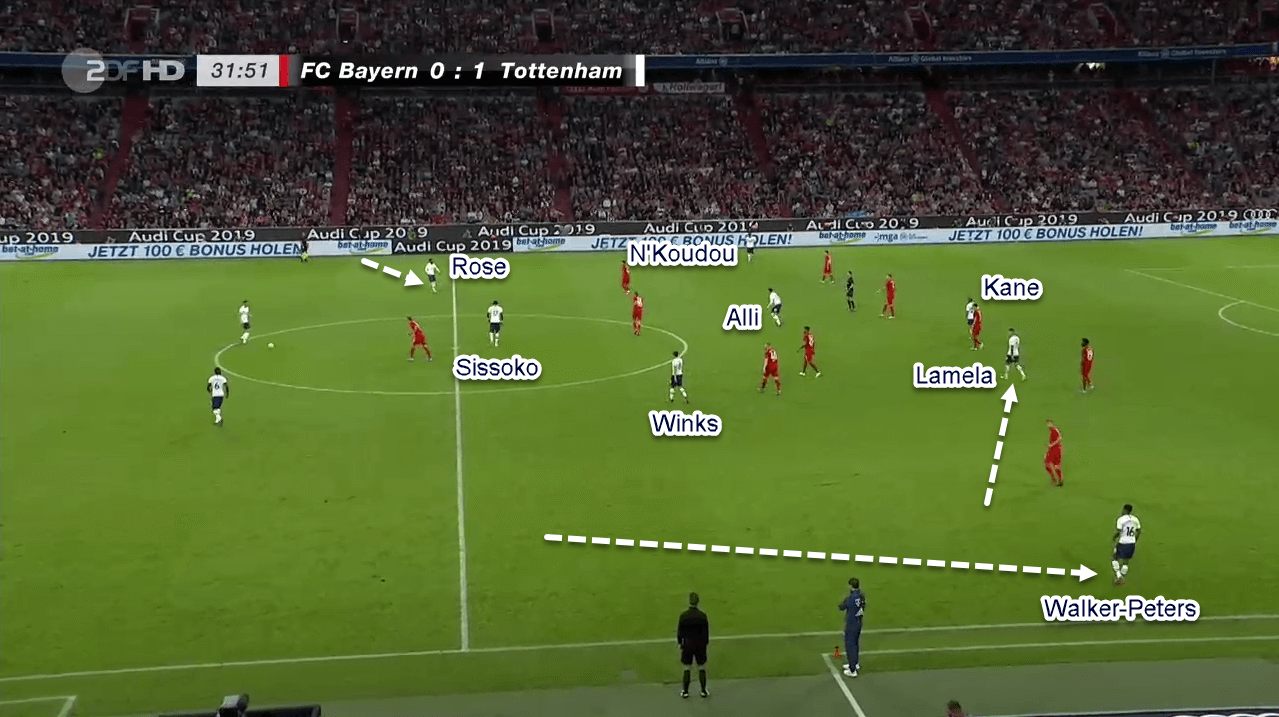
Starter-bound Son, for example, likes to engage himself in one-versus-one duels but is also very dangerous when making runs in behind. Lucas is a very quick winger, yet shows much quality playing as a striker. Eriksen was originally a playmaker but was successfully converted as a mobile midfielder last season; capable to play in a midfield three or even in a double-pivot system.
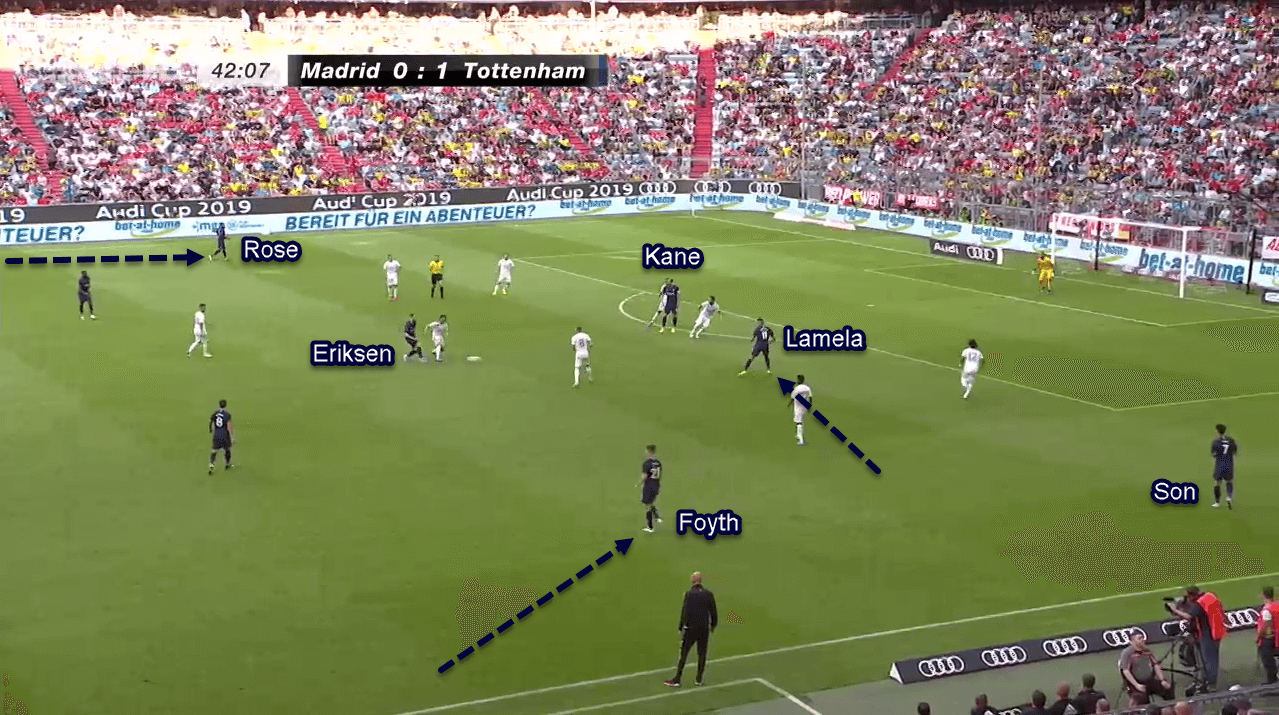
Tottenham have great depth in their full-back department and every full-back seems to have their unique skillsets that would make Spurs more unpredictable. First-choice left-back Rose likes to hug the touchline and make overlaps yet is very comfortable playing in the half-space next to the midfielders. On the opposite side, youngster Walker-Peters could play on both flanks and likes to make overlapping runs, meanwhile, Foyth prefers to play inside the half-space and join the midfield.
Unpredictable space invaders
Tottenham possess a broad range of players that have great spatial awareness and football IQ, starting from Kane, Eriksen, newcomer Lo Celso, and most famously Alli. Having players like these are very helpful for The Lilywhites as they would always find a pocket of space inside the opponents’ defensive lines. In the back, their centre-halves are also very strong on the ball and have the capability to make line-breaking passes for their advanced teammates whenever needed.
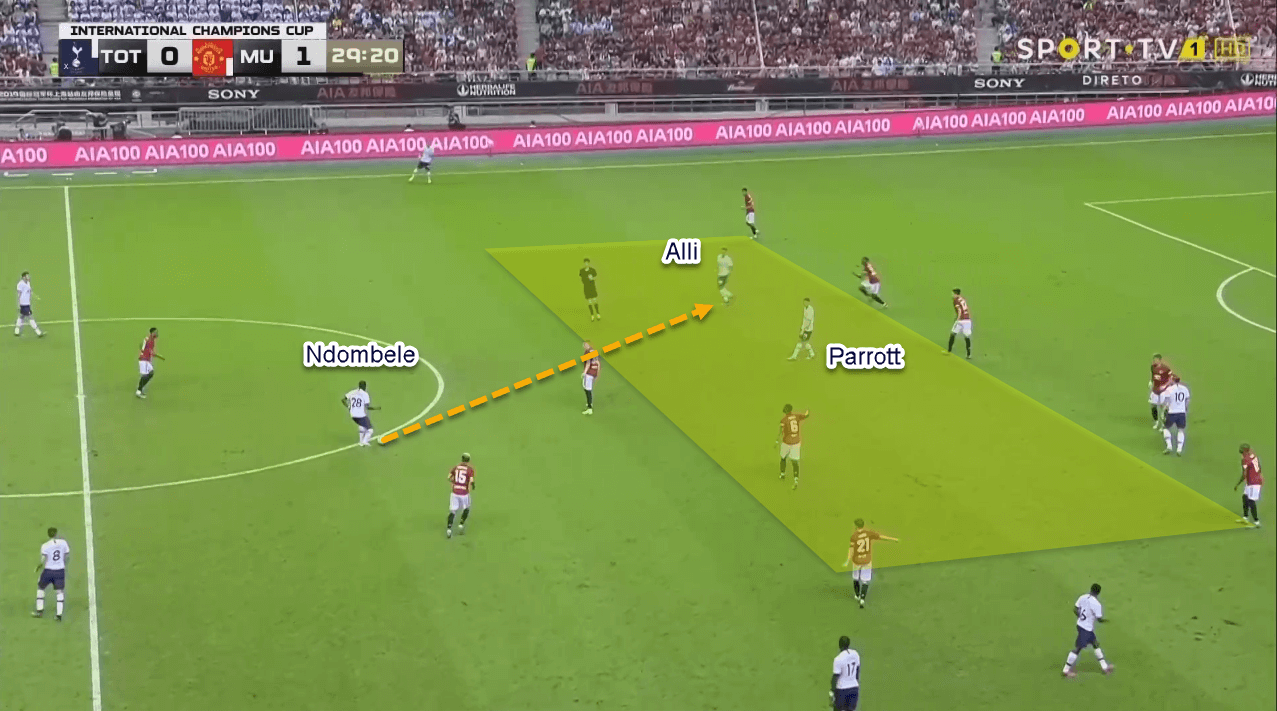
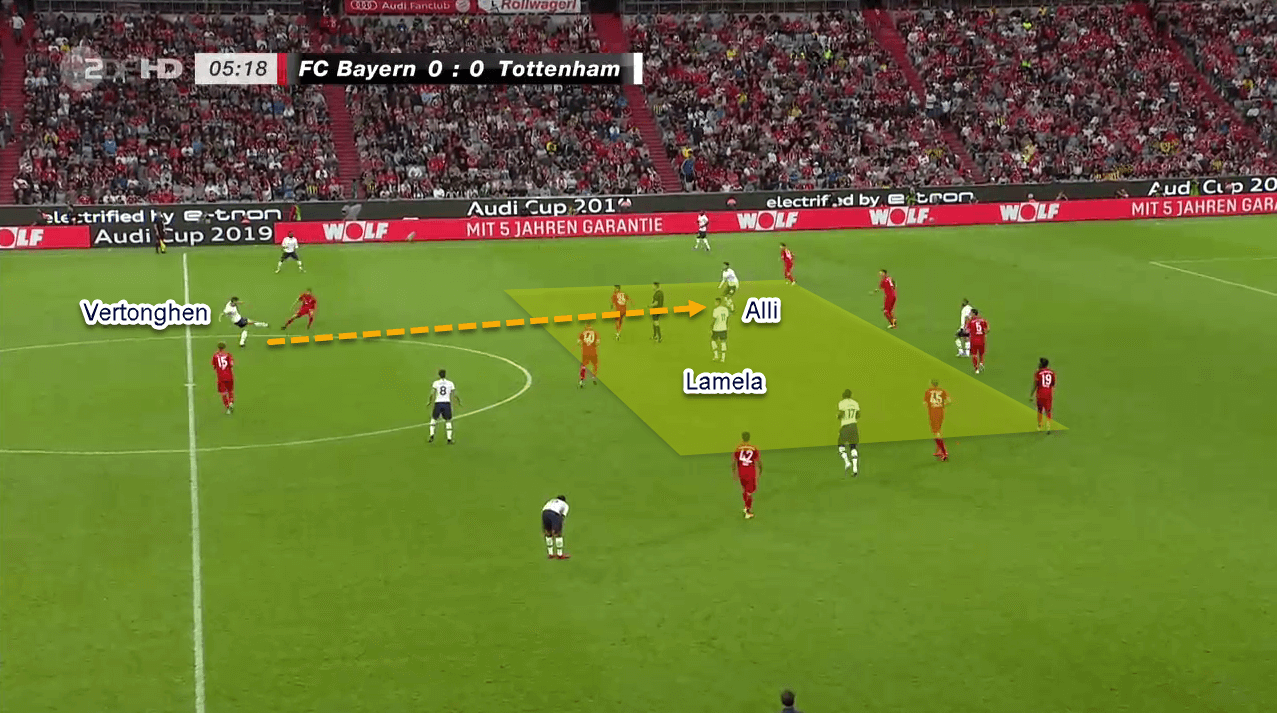
Not only that, they possess a great ability to play in tight spaces. This enables them to escape from the incoming opponent(s) and combine with their nearby teammates. These players and their skillsets are very valuable for Tottenham when facing teams who like to sit deep.
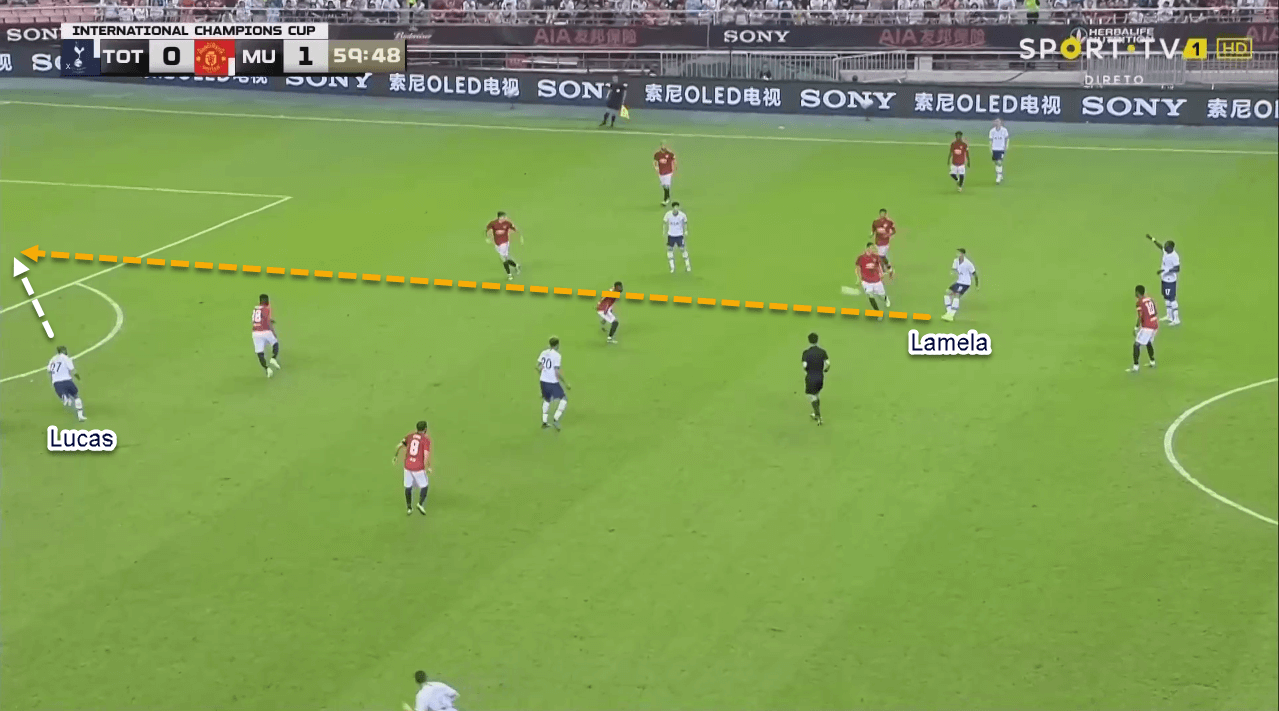
How about playing against teams who like to use a high defensive line? Spurs have the answers for that too. Rapid players like Lucas or Son are able to play in behind. Fortunately for them, Spurs have numerous players who possess great vision who can find them in behind with sharp through-balls — either grounded or lofted — such as Eriksen, Lamela, or even Kane. Moreover, sometimes their players switch roles and confuse the opponents even further as they become more unpredictable.
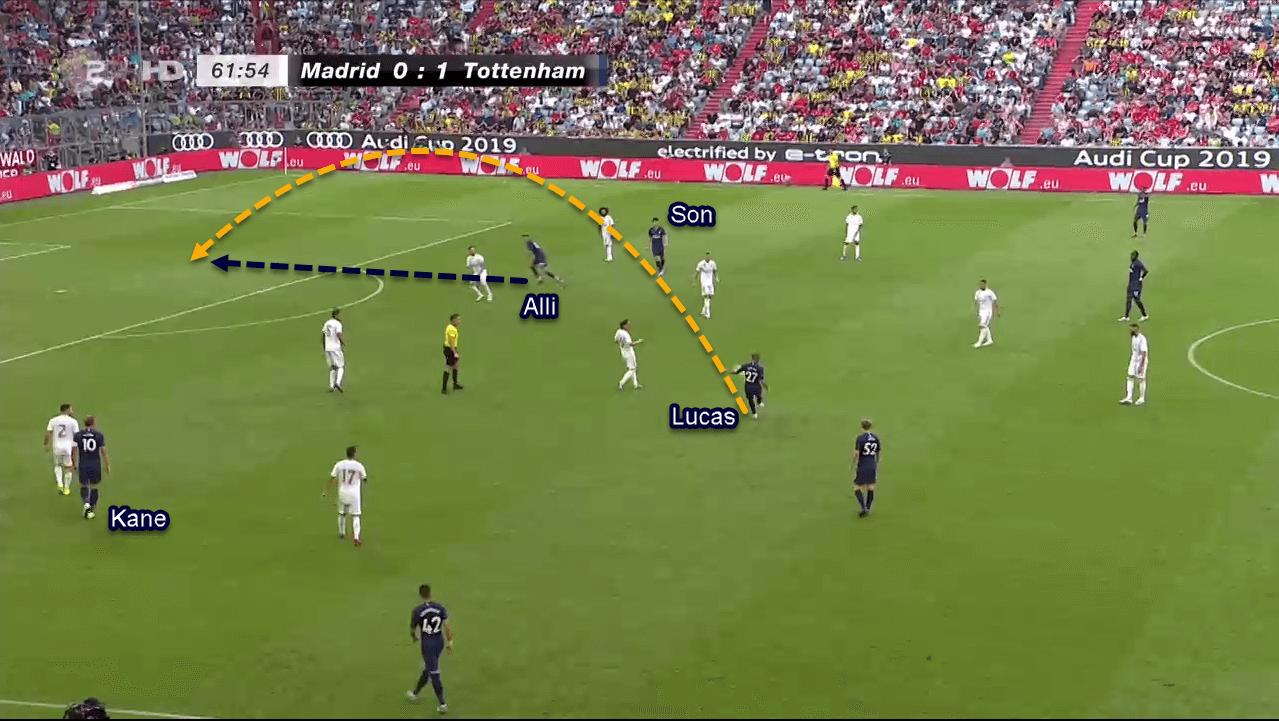
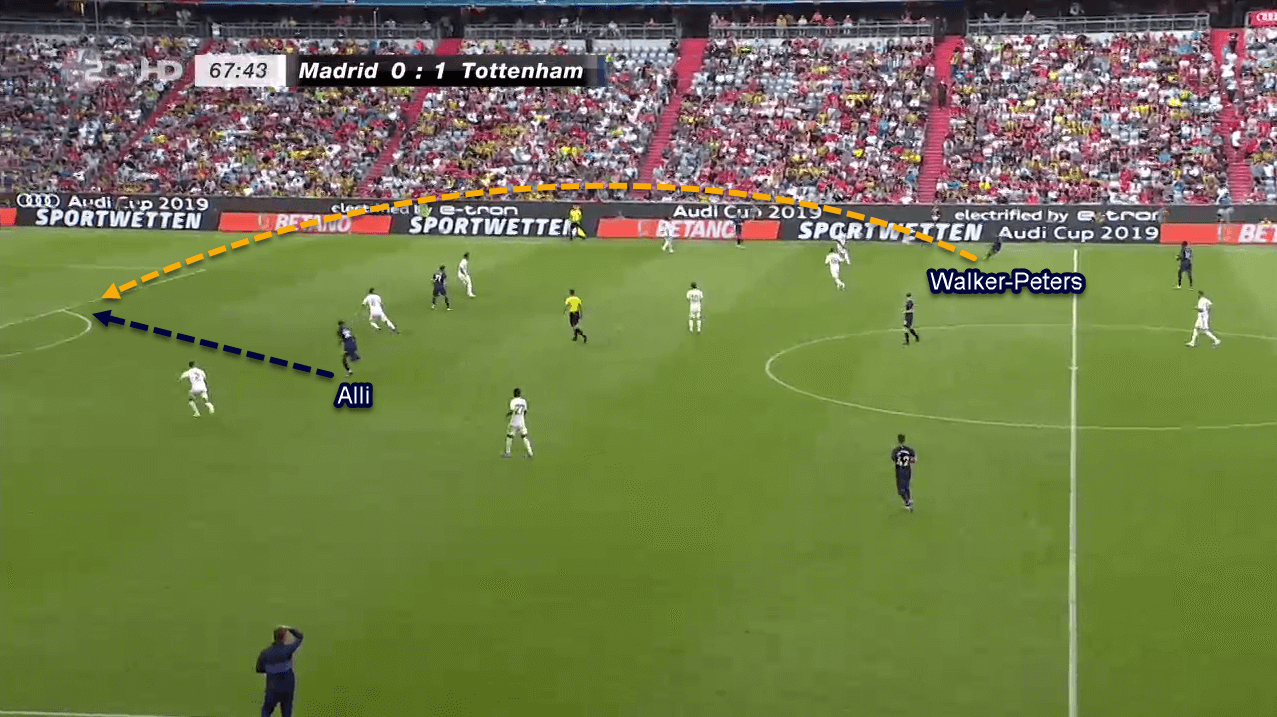
Aggressive and compact defensively
Under Pochettino, The Lilywhites have become a very disciplined side off the ball. They like to use a high defensive line and prefer to make offside traps for their opponents. Such defensive approach needs a great amount of focus and coordination to succeed and Pochettino has proved that he’s able to implement this regularly; credit to his superb coaching.
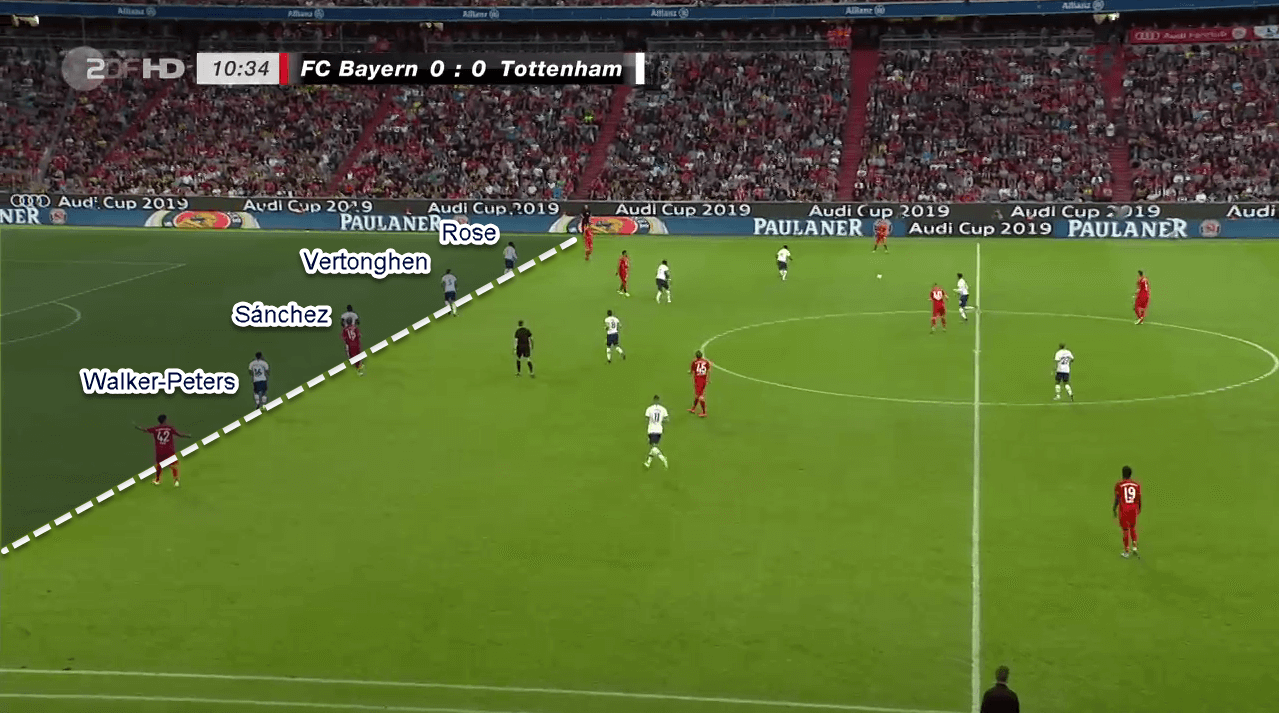
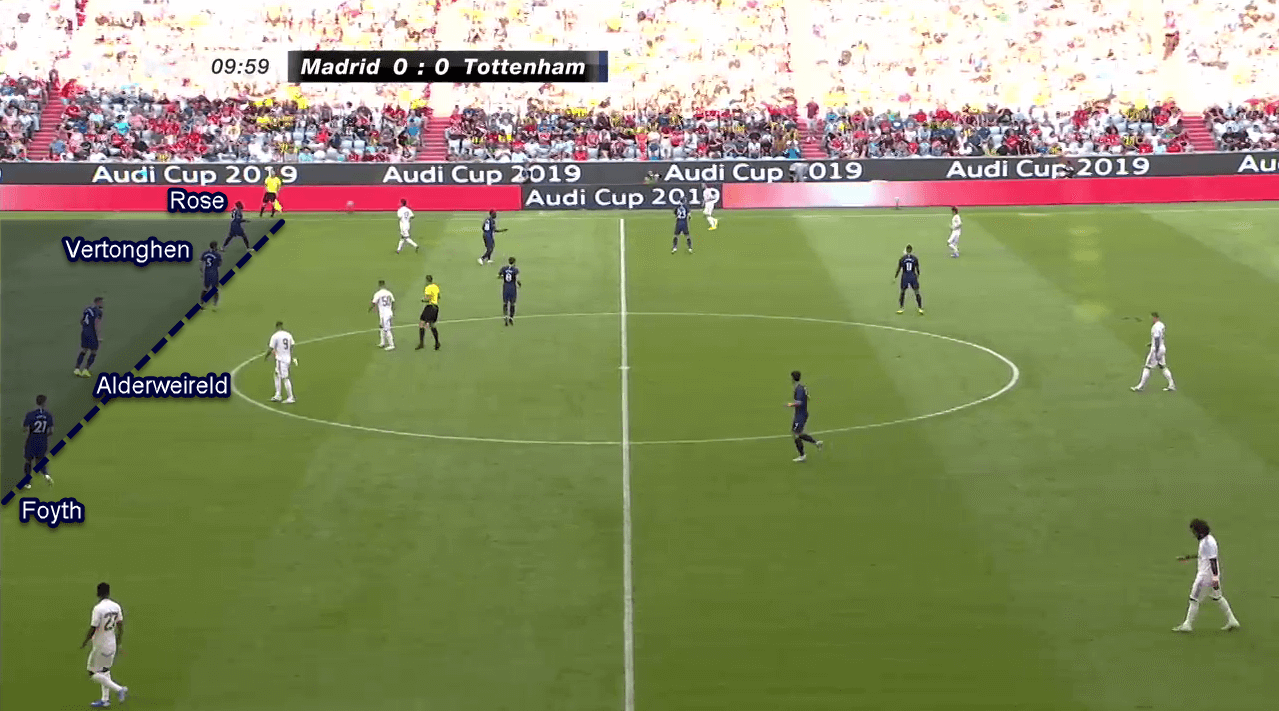
Tottenham are also very compact in their defensive block. They would squeeze the area between the defenders and the attackers as small as possible so their opponents couldn’t play in between the lines. Not only that, they would congest as many players as possible near the ball, therefore making their rivals unable to play short and quick combinations.
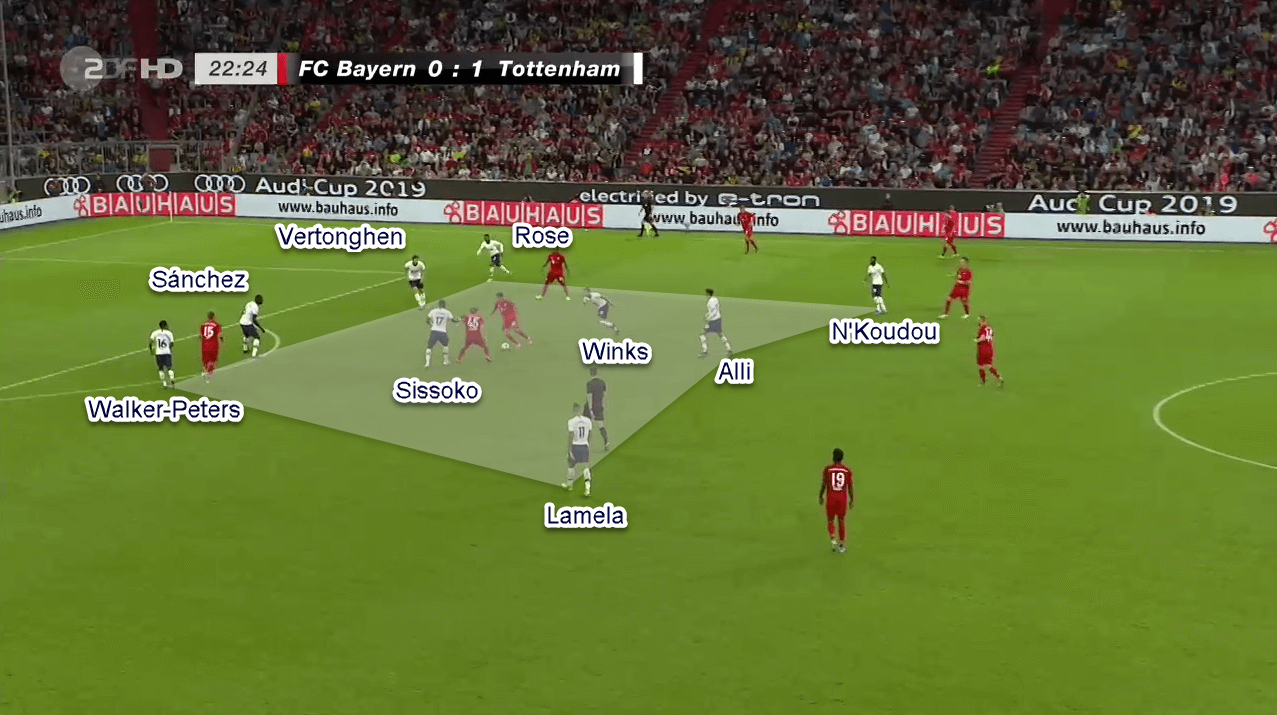
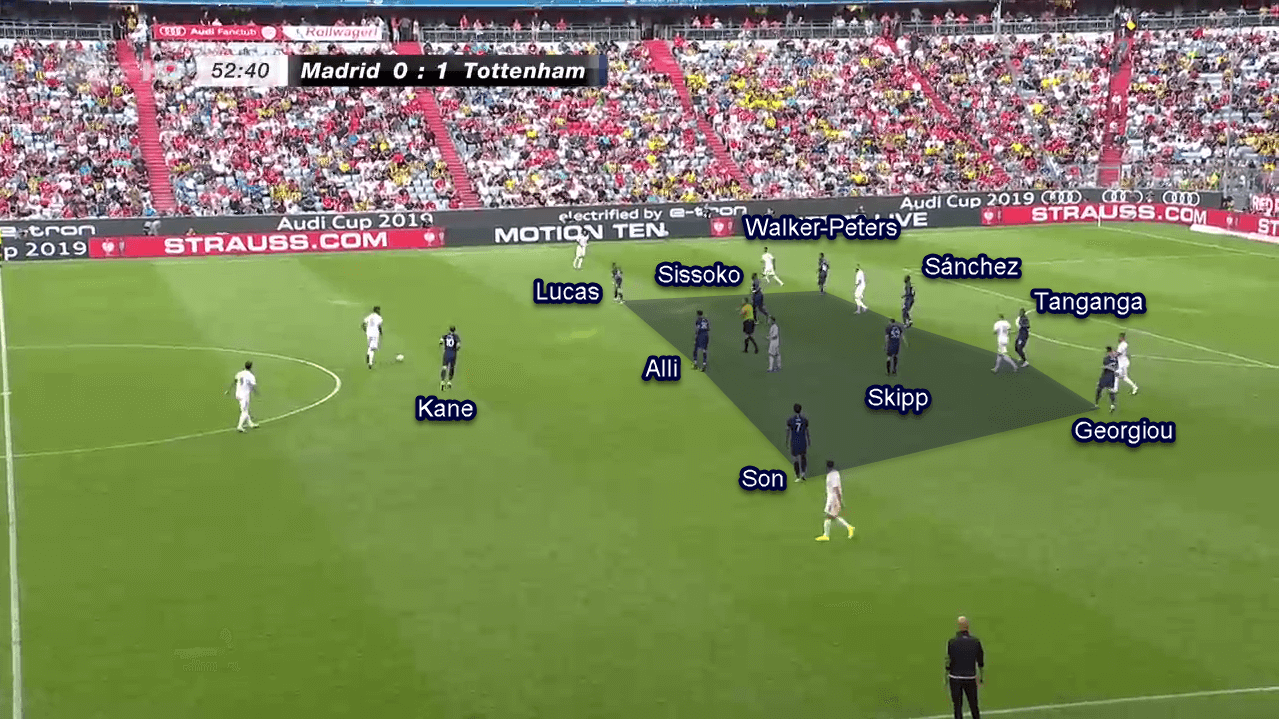
A high level of compactness both vertically and horizontally would help Tottenham to provoke turnovers and allow them to attack in transitions quicker. In transitions, Tottenham are also very dangerous. Even though they prefer to have the ball for most of the time, they can make rapid-fire transitional attacks whenever necessary. They even do that quite aggressively by sending up to four players in their counter-attacks, thus making them hard to defend in transitions.
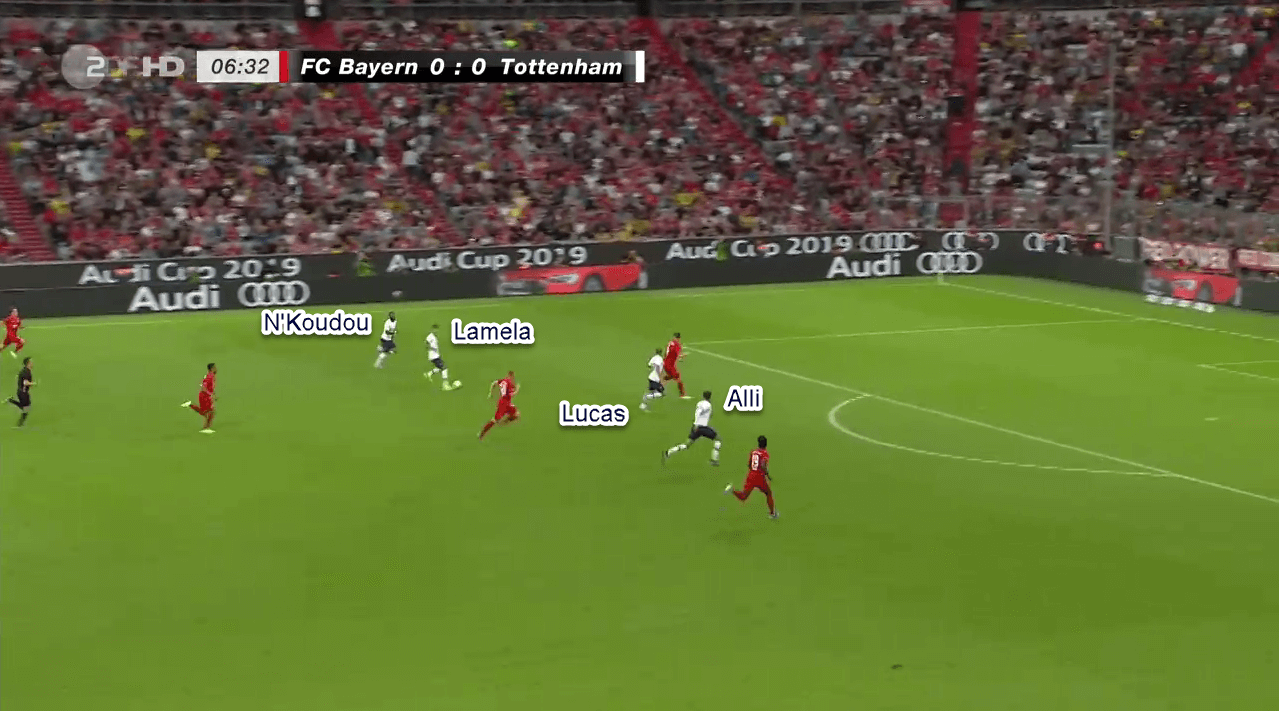
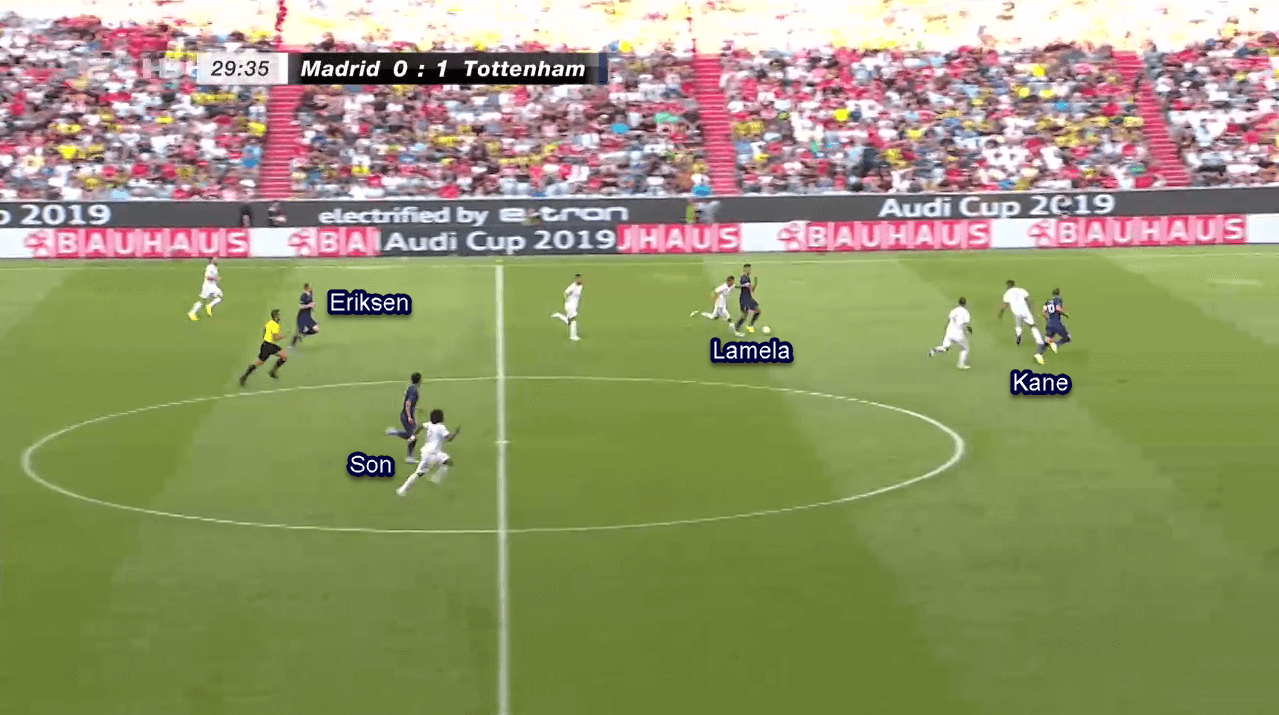
Potential offensive issues
Even though having a lot of smart players who are very clever on and off the ball and able to pull off various approaches to break down their opponents, Tottenham are still lacking in one area offensively. They have no reliable back-up for Kane upfront, especially in the physical aspect. Kane is 1.88 metres tall and has a great physique; making him a valuable asset when Spurs need to make crosses late in the game.
Parrott is only an inch shorter than Kane but the 17-year-old still lacks the quality to be Kane’s back-up anytime soon. Even though they have relatively tall players like Lamela, Son or Alli in the second line, none of them possesses as strong a physique or aerial ability as Kane’s.
Last season they had the towering 1.95 metre Fernando Llorente who was very useful as a plan B player, particularly when Kane was out due to an ankle injury. Furthermore, Llorente almost singlehandedly helped Tottenham to cruise past Ajax in the Champions League semi’s last season by dominating Matthijs de Ligt and Daley Blind in both legs. However, he’s not on the squad anymore and Spurs are yet to find his replacement.
Another weakness they may have is, ironically, in their captain Lloris. The Frenchman is a superb shot-stopper but is not quite good with the ball on his feet. Lloris is prone to opponents’ high-and-aggressive pressing and any defensive error at the back could prove costly for his side. The fact that Spurs like to build their plays from the back doesn’t help either; making him as Tottenham’s Achilles heel.
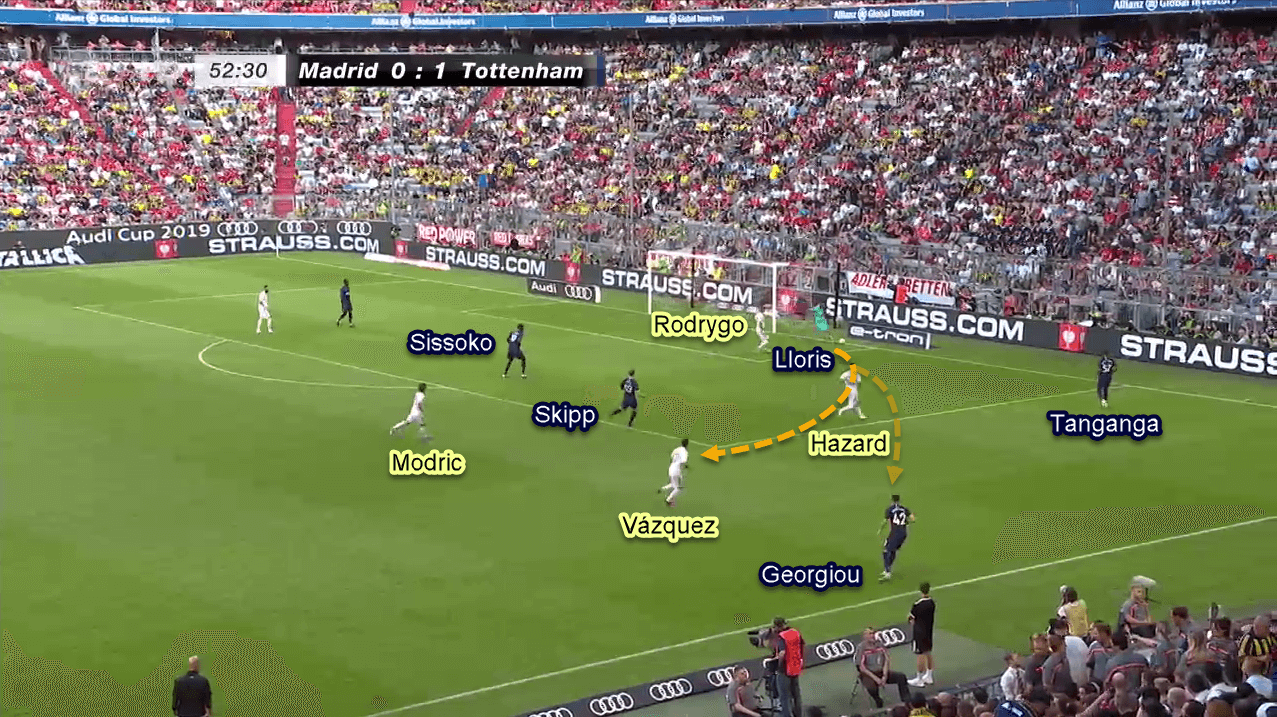
Potential defensive issues
As mentioned in this analysis before, Spurs like to use a high line defensively and often make offside traps. Such approaches need great communication and superb coordination to do but would give many rewards when successfully pulled off.
However, when they fail to do so they would give away a huge space for the opponents to play in behind. This would allow the opponents’ attacker(s) to get into the penalty box almost freely; giving him a lot of time and space to attack their goal. Pochettino needs to work on this thoroughly as they would often face lots of counter-attacks from other teams, either from big clubs like Manchester United and Liverpool or from lesser sides.
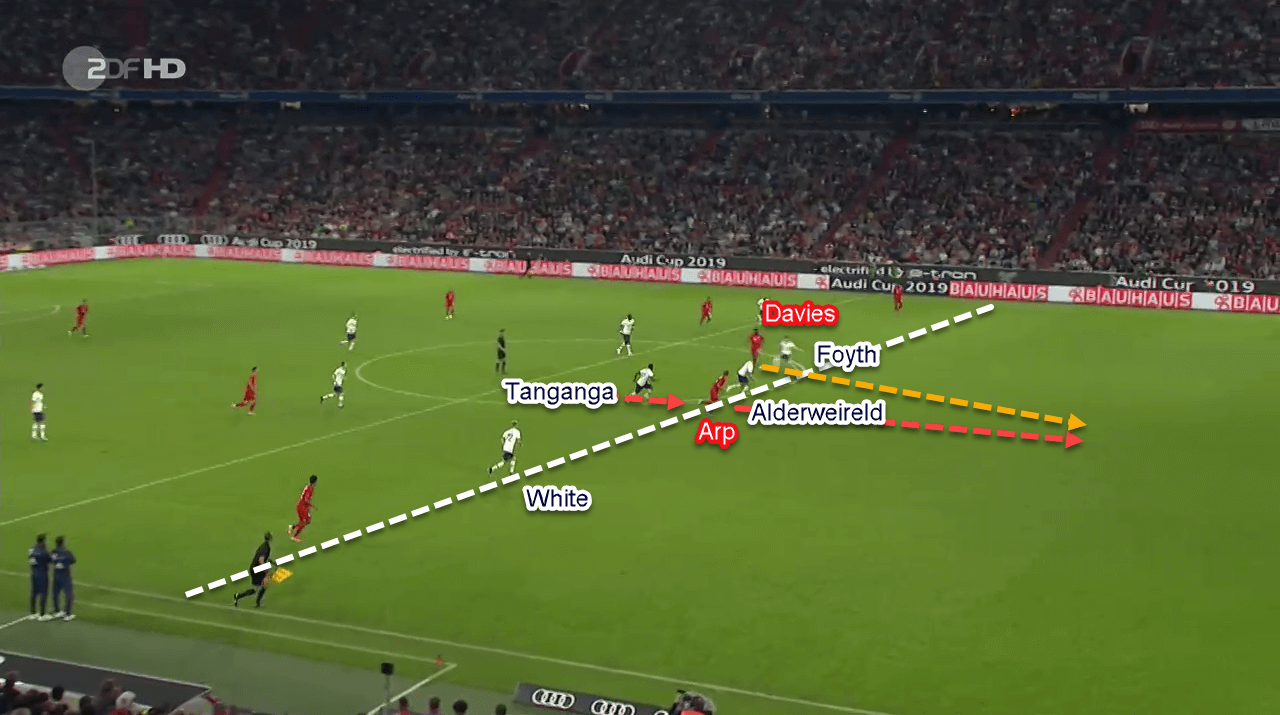
Another area that could be exploited by the opponents is Tottenham’s tendency to abandon the far-side flank, particularly when sitting deep. Their far-side full-back and winger would come to join the defensive block and squeeze the space; leaving the flank free for the rivals’ full-back or winger to roam into.
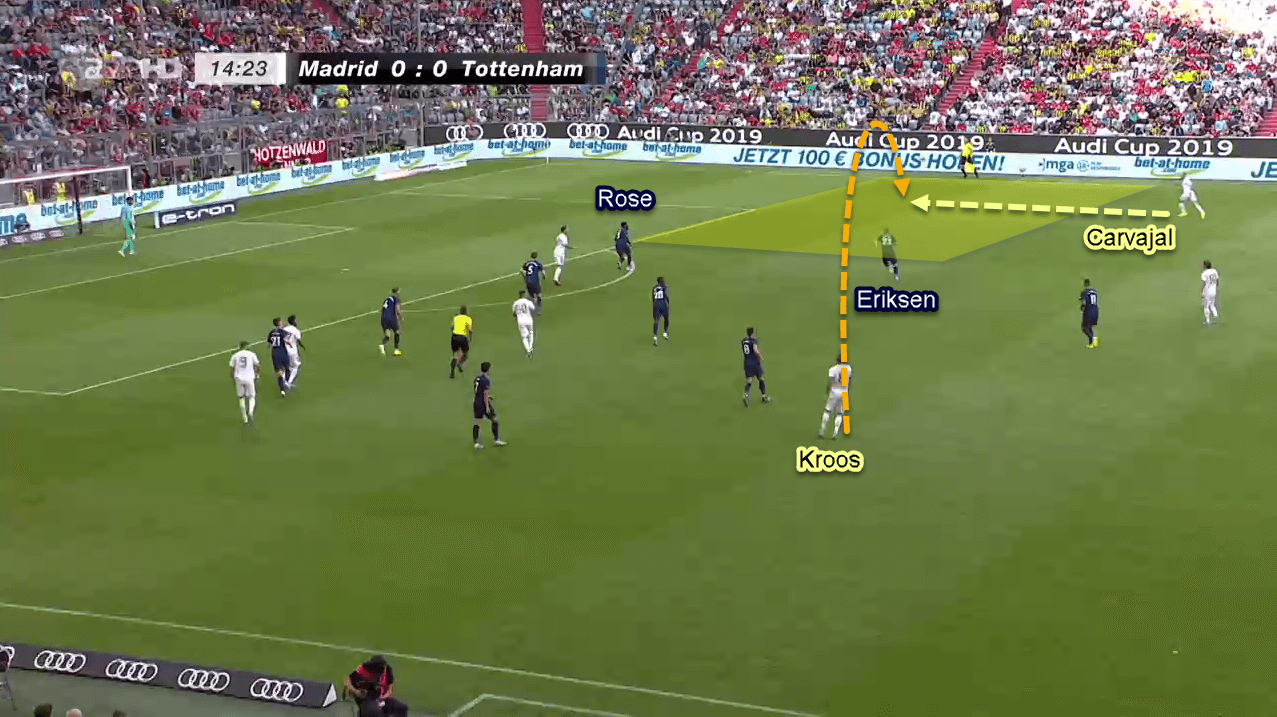
Their opponents could exploit this by making a diagonal pass to that area. The receiver then could make a cross quite comfortably into the box while Spurs’ defenders are still adapting to that pass. A good delivery could damage Tottenham’s defence heavily, even though they have physical defenders who can cope in aerial duels and reduce the threat.
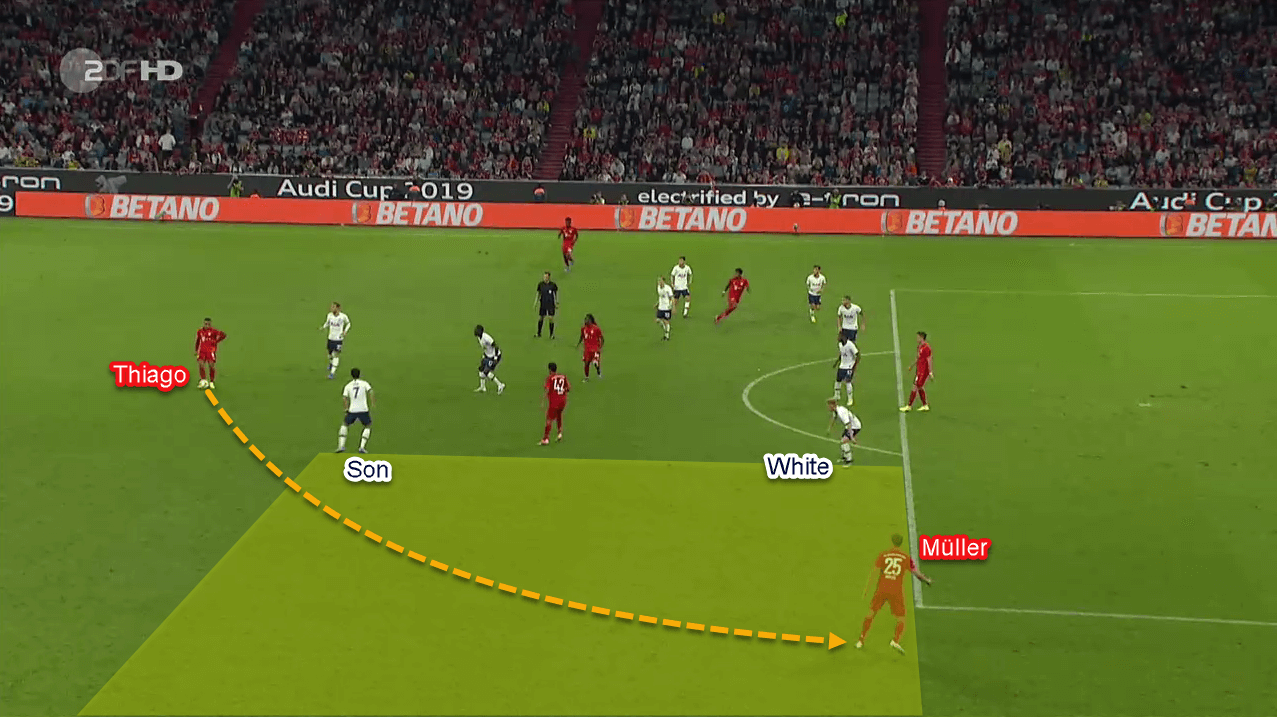
Conclusion
A strong transfer window, a great depth of versatile players, an experienced squad, and a very creative manager in the dugout. Tottenham’s expectations this season are higher than ever. Pochettino now has a great burden on his shoulders to bring the silverware to the White Hart Lane. If injuries don’t hit them hard like last season, we probably will see new Premier League champions in May.

If you love tactical analysis, then you’ll love the digital magazines from totalfootballanalysis.com – a guaranteed 100+ pages of pure tactical analysis covering topics from the Premier League, Serie A, La Liga, Bundesliga and many, many more. Buy your copy of the July issue for just ₤4.99 here, or even better sign up for a ₤50 annual membership (12 monthly issues plus the annual review) right here.

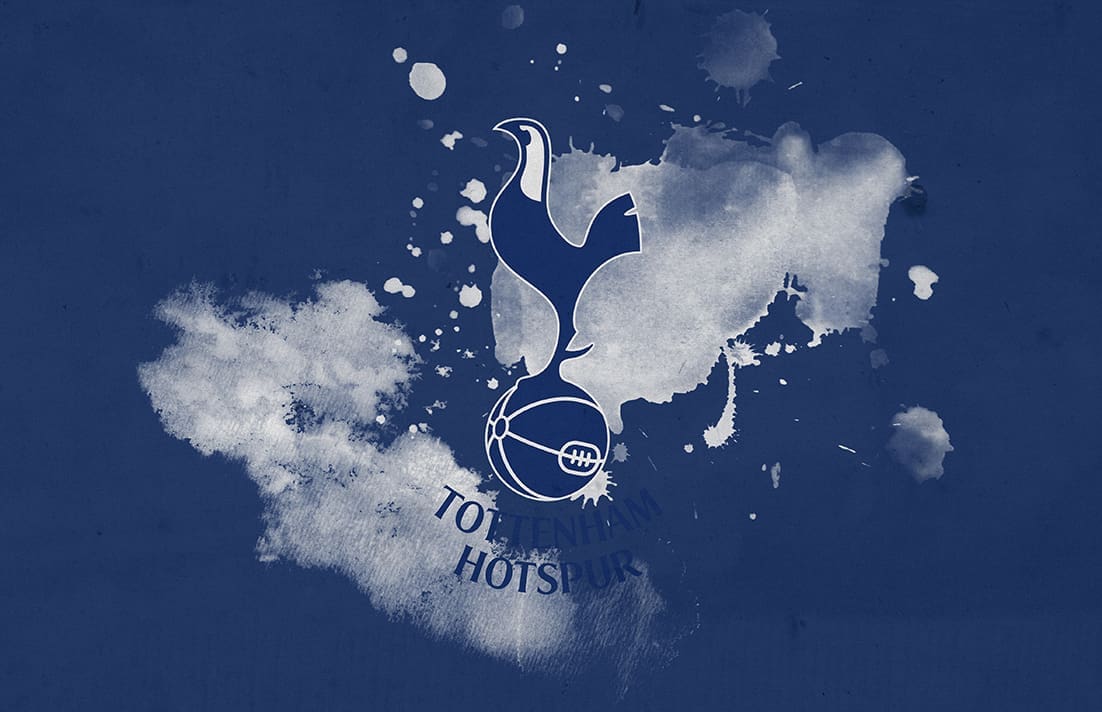



Comments